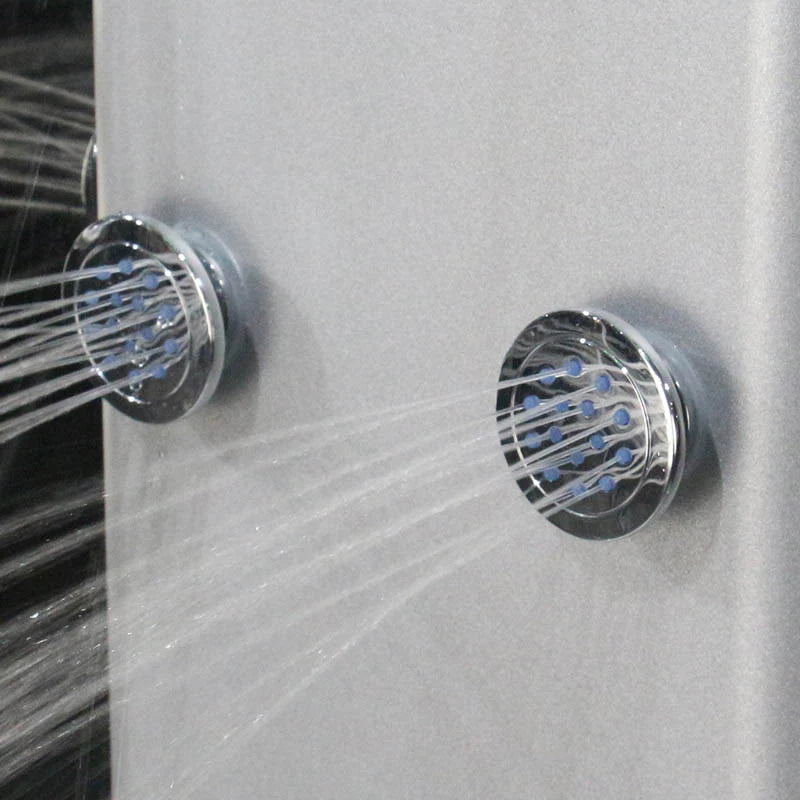Ever feel like your bathroom turns into a Steam Room or Steam Bath after a hot shower? Can shower steam cause mould? Yes—it absolutely can! That steamy paradise fuels mould growth fast. Don’t panic—keep reading for simple, effective tips to stop your loo turning into a mildew jungle.

The Science Behind Mould Growth in Bathrooms
What Mould Needs to Thrive (Moisture, Warmth, Food Source)
Mould loves three things: moisture, warmth, and a food source.
Bathrooms often tick all the boxes. Humid air from steamy showers sticks to surfaces, and everyday grime provides nutrients. Add warmth and poor airflow, and you’ve got an ideal breeding ground.
How Shower Steam Creates an Ideal Environment
Steam from hot showers turns into condensation when it hits cooler surfaces like mirrors, windows, and tiles.
This trapped moisture lingers, keeping the air and surfaces damp. Without good ventilation, these damp spots stay wet far too long—perfect for mould to settle and spread.
Common Mould-Prone Areas in the Bathroom
Some places attract mould more than others. These include:
-
Tile grout and silicone sealant
-
Ceiling corners and around light fixtures
-
Shower curtains, bath mats, and loofahs
-
Behind the toilet or under the sink
-
Window sills and ventilation ducts
Preventing Mould: Essential Strategies and Tips

Improve Ventilation (Exhaust Fans, Windows, Dehumidifiers)
Ventilation is key. Use an exhaust fan if you have one and leave it running for 15–20 minutes after each shower.
No fan? Open a window instead. If your bathroom stays humid, a small dehumidifier can make a noticeable difference.
Daily Habits to Reduce Moisture (Squeegeeing, Wiping Surfaces, Drying Towels)
After showering, squeegee your tiles and glass to remove excess water.
Wipe down flat surfaces, especially around the sink and bath. Hang towels separately to dry and avoid draping them over radiators or leaving them in heaps on the floor.
Regular Cleaning and Maintenance (Cleaning Frequency, Grout Sealing, Addressing Leaks)
Clean your bathroom weekly with a mould-fighting spray or natural remedy.
Keep an eye out for grout cracks and reseal when needed. Don’t ignore drips from taps or pipes—slow leaks are a silent cause of ongoing moisture issues.
Choosing Mould-Resistant Materials and Products (Paints, Caulk, Shower Curtains)
Use anti-mould paint on walls and ceilings. Replace silicone with mould-resistant caulk, especially around showers and sinks.
Opt for vinyl shower curtains that repel water rather than fabric ones, which hold on to dampness and bacteria.
Dealing with Existing Mould
Identifying Mould (Visible Signs, Musty Odours)
Watch for:
-
Dark or fuzzy patches on walls, grout, or ceiling corners
-
A musty, damp smell that lingers even after cleaning
-
Discoloured caulking or cracked grout
These are all clues that mould might be lurking.
Safe Mould Removal Methods (Natural Remedies vs. Commercial Cleaners)
For small areas, use a mix of white vinegar and water, or baking soda paste.
Commercial cleaners also work but always follow the label and ensure good airflow. Scrub gently with a sponge or soft brush and wear gloves to protect your skin.
When to Call a Professional
If mould keeps coming back, or covers a large area (about 1m² or more), bring in a specialist.
Professionals can detect hidden leaks, test air quality, and remove mould without spreading spores elsewhere in your home.
Takeaways
-
Yes—shower steam can cause mould, especially in poorly ventilated bathrooms.
-
Mould thrives in warm, damp environments with organic matter.
-
You can prevent it by improving ventilation, adopting daily habits, and using resistant materials.
-
Address mould early to avoid larger health or home repair issues.
-
When in doubt, call a professional for safe removal and advice.






